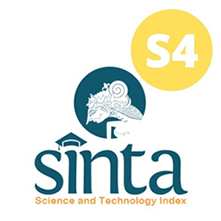Exploration of Biomechanical and Biooptical Sensors on Cardiac Monitor (Carotid Pulse)
Abstract
Cardiovascular diseases are a significant global health concern, often requiring timely and accurate monitoring for effective management. Traditional heart monitoring devices face limitations, such as inadequate real-time data and suboptimal accuracy. This study aims to enhance the detection of carotid pulse signals by comparing the performance of two sensor types: piezoelectric sensors and SEN0203 sensors. The methodology involved designing a cardiac monitoring device that integrates both sensors to simultaneously capture carotid pulse and phonocardiograph (PCG) signals. Data collection was conducted on 10 respondents, where both sensors were applied alternately to the carotid artery, and the signals were analyzed using an oscilloscope. The results demonstrated that the piezoelectric sensor outperformed the SEN0203 sensor in terms of signal clarity and amplitude. Specifically, the average amplitude of the carotid pulse recorded by the piezoelectric sensor was 5.3 mV, while the SEN0203 sensor recorded an average amplitude of only 3.2 mV. Additionally, the correlation analysis revealed a strong relationship between the carotid pulse and PCG signals, with a correlation coefficient of 0.87, indicating a high degree of reliability in the measurements obtained from the piezoelectric sensor. In conclusion, the findings of this study suggest that piezoelectric sensors are more effective for monitoring carotid pulse signals compared to SEN0203 sensors, providing clearer and more reliable data. This advancement in sensor technology has the potential to improve early detection of cardiovascular abnormalities, leading to better patient outcomes. Future research should focus on the development of portable monitoring devices that incorporate these sensors, facilitating widespread clinical application and enhancing the overall quality of cardiovascular care.

This work is licensed under a Creative Commons Attribution-ShareAlike 4.0 International License.
Authors who publish with this journal agree to the following terms:
- Authors retain copyright and grant the journal right of first publication with the work simultaneously licensed under a Creative Commons Attribution License that allows others to share the work with an acknowledgement of the work's authorship and initial publication in this journal.
- Authors are able to enter into separate, additional contractual arrangements for the non-exclusive distribution of the journal's published version of the work (e.g., post it to an institutional repository or publish it in a book), with an acknowledgement of its initial publication in this journal.
- Authors are permitted and encouraged to post their work online (e.g., in institutional repositories or on their website) prior to and during the submission process, as it can lead to productive exchanges, as well as earlier and greater citation of published work (See The Effect of Open Access).











